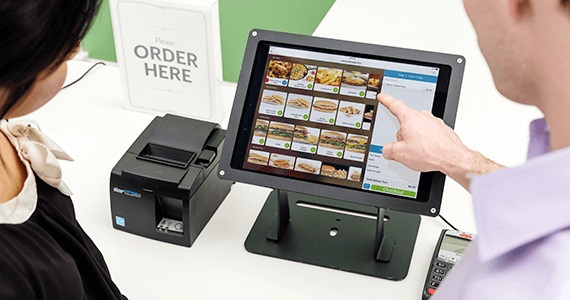Customer support channels encompass the diverse mediums through which businesses engage with their clientele.
From traditional avenues like phone calls and emails to modern platforms such as live chat and social media, customer support channels form the backbone of a company’s interaction strategy.
Effective customer support channels are pivotal for fostering positive customer experiences, building brand loyalty, and resolving issues promptly.
In today’s dynamic business landscape, understanding and optimizing customer support channels are critical for organizations striving to meet the evolving expectations of their clientele.
This is why we will explore the spectrum of customer support channels, from traditional methods like phone and email to contemporary solutions like live chat and social media.
This analysis will offer insights into the unique strengths of each, empowering businesses to craft a seamless, effective support strategy that blends the best of both worlds for customer satisfaction.
Traditional Customer Support Channels
Regarding customer service channels, businesses navigate a landscape defined by diverse means of interaction. These customer channel examples focus on the fundamental avenues through which companies connect with their clientele, ensuring effective communication and issue resolution.
Among these, we will dive into traditional methods, each playing a distinct role in shaping customer experiences.
1. Phone Support
Phone Support is a crucial pillar in customer service channels, providing a direct and immediate lifeline for clients seeking real-time assistance. The simplicity of a phone conversation enhances the personal touch in addressing customer concerns promptly.
2. Email Support
Email Support, another cornerstone in customer channel examples, offers a formal written avenue for queries and resolutions. This method ensures documented communication, adding a layer of formality to customer interactions.
3. Live Chat
Live Chat brings dynamism to customer support channels, facilitating instant interactions. With a focus on swift issue resolution, this method caters to the modern need for quick responses and dynamic engagement.
Emerging Customer Support Channels

As the business landscape evolves, so do the avenues through which businesses connect with their customers. The emergence of new customer service channels reflects a commitment to innovation and responsiveness.
In the following text, we will dive into the area where technology and customer needs converge to shape the future of channel customer service.
1. Social Media Support
As businesses adapt to the digital era, Social Media Support has emerged as a transformative customer service channel.
Companies leverage platforms like Facebook and Twitter to engage with customers in real time, addressing concerns and building brand loyalty. This dynamic approach provides a direct avenue for interaction, fostering a sense of community and responsiveness.
2.WhatsApp Appointment System
The WhatsApp Appointment System introduces a streamlined way for businesses to manage appointments through the popular messaging app. This innovative approach enhances customer engagement by integrating scheduling directly into the messaging platform.
Benefits
- Seamless Appointment Scheduling: Effortlessly book appointments, enhancing customer accessibility.
- Real-Time Updates: Provide instant notifications, keeping customers informed and engaged.
- Personalized Communication: Tailor interactions, addressing individual needs for a more meaningful experience.
- Enhanced Customer Convenience: User-friendly platform streamlines appointment management, boosting overall convenience.
- Improved Customer Satisfaction: Efficient scheduling contributes to heightened satisfaction and meeting customer expectations.
Challenges
- Ensuring Data Privacy: Navigate the challenge of safeguarding customer information with robust measures for data privacy and regulatory compliance.
- Managing High Appointment Volume: Efficiently handle a potential appointment surge, ensuring service quality and customer satisfaction.
- Balancing Automation and Personalized Communication: Strike a precise balance between automated processes and personalized interactions, optimizing the system for diverse business requirements.
3. Queue Management System
The Queue Management System optimizes customer service by efficiently organizing queues in physical or virtual spaces.
Implementation involves integrating technology to monitor and control the flow, reduce wait times, and enhance the overall customer experience. The advantages include improved efficiency, reduced congestion, and increased customer satisfaction.
4. Self-Service Kiosk Scenarios
Self-service kiosks revolutionize customer interactions by providing a user-friendly, automated interface for various services. Customers can independently perform order placement, check-in, or information retrieval tasks.
Applications
From fast-food restaurants to airports, the applications of Self-Service Kiosks are diverse. They streamline processes, reduce wait times, and empower customers with control over their transactions.
User Experience:
The user experience is designed for simplicity and efficiency, guiding users through the process. Intuitive interfaces and clear instructions contribute to a positive user experience, making Self-Service Kiosks a valuable addition to customer service scenarios.
Integrating Modern Technologies

Integrating modern technologies is paramount for staying ahead in the dynamic customer service landscape. By seamlessly incorporating cutting-edge solutions, businesses can enhance efficiency, elevate customer experiences, and adapt to the evolving expectations of a tech-savvy clientele.
Let’s look at what integrating modern technologies into customer support channels entails.
1. Artificial Intelligence in Customer Support
Embracing the power of Artificial Intelligence (AI) in customer support redefines the service landscape. Chatbots, AI-driven conversational agents, provide instant responses, streamline interactions, and address queries efficiently.
Virtual Assistants, another facet of AI, offer personalized assistance, enhancing the overall customer experience.
Through these innovations, businesses optimize operational efficiency and create a more responsive and adaptive customer support ecosystem, ultimately fostering customer satisfaction and loyalty.
2. Data Analytics for Customer Insights
Data analytics emerges as a game-changer in the ever-evolving customer support landscape, providing businesses with a strategic edge. Here’s how:
Deep Customer Understanding
- Uncover invaluable insights into customer preferences, behaviors, and pain points through meticulous data analysis.
Targeted Decision-Making
- Utilize the wealth of information to make targeted decisions, aligning products and services with customer expectations.
Personalized Service Delivery
- Tailor customer interactions based on data-driven insights, creating a more personalized and engaging support experience.
In these times of data-driven decision-making, businesses leveraging data analytics gain the ability to predict trends, anticipate needs, and cultivate lasting customer relationships.
Organizations streamline operations by seamlessly integrating analytics into customer support channel strategies and position themselves at the forefront of a competitive market.
Importance of Multichannel Support

When we talk about customer service channels, the significance of multichannel support cannot be overstated. By offering diverse avenues for customer interaction, businesses align with evolving preferences and elevate the overall customer experience.
1. Meeting Customer Preferences
Multichannel support caters to the varied preferences of modern consumers. Whether through traditional methods like phone calls or innovative approaches like live chat and social media, providing a spectrum of customer channel examples ensures that customers can engage through their preferred medium, fostering a sense of flexibility and convenience.
2. Enhancing Customer Experience
Integrating multichannel support goes beyond meeting preferences; it actively contributes to customer experience analytics.
Businesses can analyze interactions across channels, gaining insights to refine strategies, personalize interactions, and ultimately enhance the customer journey. This adaptability positions companies to deliver a seamless and customer-centric experience in today’s dynamic market.
Challenges in Implementing Various Channels
Businesses encounter diverse challenges during implementation in the dynamic area of multichannel customer support. Navigating these hurdles is crucial for maintaining a seamless and effective customer service ecosystem.
1. Technical Challenges
- Addressing compatibility issues between different customer support channels requires robust technical solutions.
- Integration complexities may arise, especially when incorporating new channels into existing systems.
- Ensuring consistent performance and reliability across diverse platforms poses a persistent technical challenge.
2. Training and Skill Development
- Training support staff to proficiently handle multiple channels demands strategic planning and investment.
- Continuous skill development becomes essential as new channels and technologies are introduced.
- Overcoming resistance to change among team members requires adequate training and change management strategies.
3. Ensuring Consistency Across Channels
- Maintaining a unified brand voice and message across diverse channels demands meticulous coordination.
- Ensuring consistent response times and service quality across all channels is essential for a cohesive customer experience.
- Overcoming the challenge of siloed information and ensuring data consistency is critical for seamless multichannel support.
In successfully addressing these challenges, businesses can establish a robust multichannel support system that meets customer expectations and improves operational efficiency and long-term customer satisfaction.
Case Studies
Nasfund’s Digital Transformation Journey
Nasfund, the largest private superannuation fund in Papua New Guinea, partnered with Wavetec to revolutionize its customer support channels. By deploying a hybrid enterprise queuing solution and incorporating WhatsApp queueing, Nasfund embraces an omnichannel experience for its members.
The initial deployment at 5 service centers, with 10 more planned in Q1 2023, illustrates Nasfund’s commitment to offering diverse and efficient customer support channels, ultimately enhancing the overall member experience.
This strategic investment aligns with Wavetec’s expertise in optimizing customer interactions and showcases the tangible benefits of evolving customer support systems.
Transforming Retail Experiences with Wavetec’s Queuing Solutions
In collaboration with Wavetec, Consum Cooperativa Valenciana, Spain’s leading retailer, has strategically implemented queuing solutions across 500 sites. Wavetec’s deployment optimized customer support channels to address the challenges of long wait times.
The result: efficient queue management, enhanced customer satisfaction, increased sales, and staff efficiency. Consum’s success exemplifies how innovative queuing solutions reshape customer support channels, fostering sustainable retail excellence.
Conclusion
In conclusion, the ever-evolving domain of customer support channels necessitates a strategic approach for businesses to thrive in the competitive market. The significance of offering diverse customer service channels cannot be overstated, aligning with the dynamic preferences of modern consumers.
As organizations navigate technical challenges, invest in training, and strive for consistency across channels, the goal remains clear: to enhance the overall customer experience.
Embracing multichannel support meets customer expectations and provides invaluable insights through analytics.
By understanding and addressing these challenges, businesses position themselves to adapt to the current market and proactively shape the future of customer support in a way that resonates with their clientele.
BOOK A FREE DEMO




